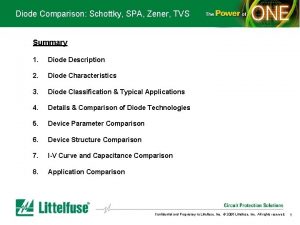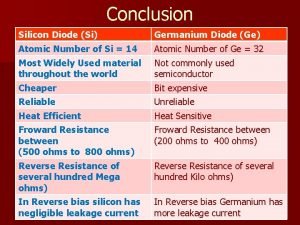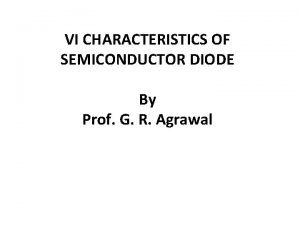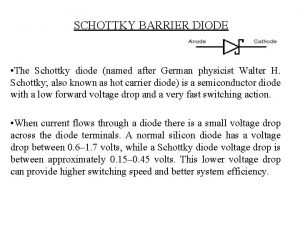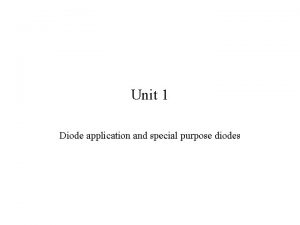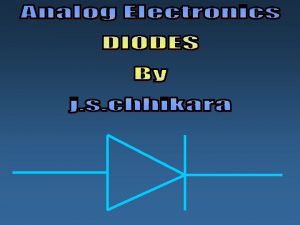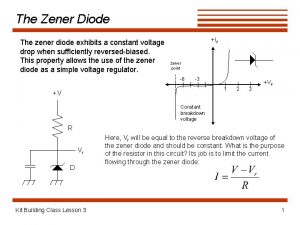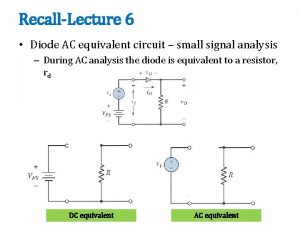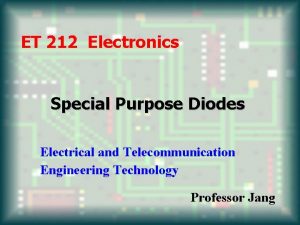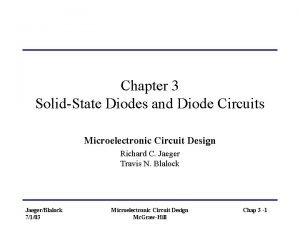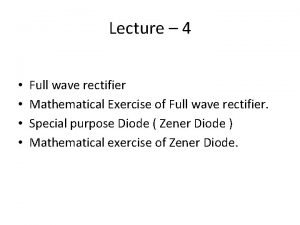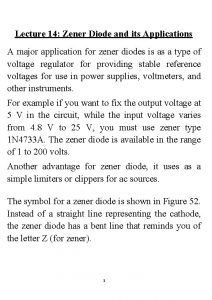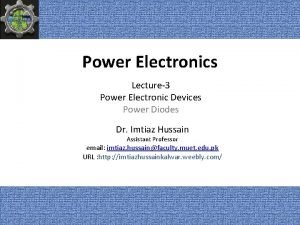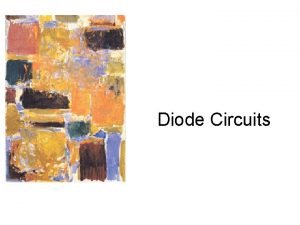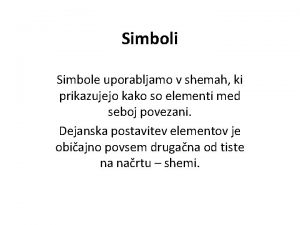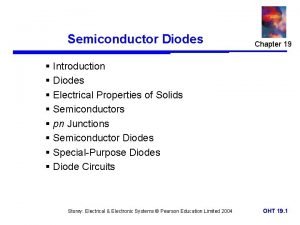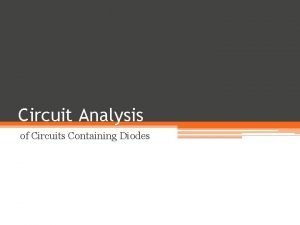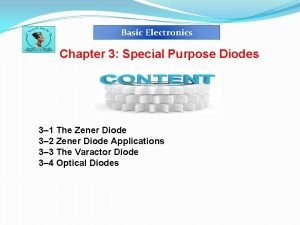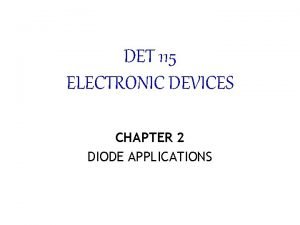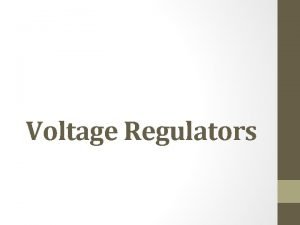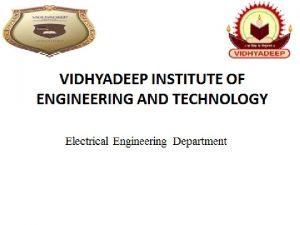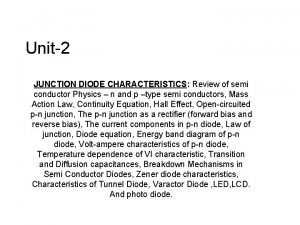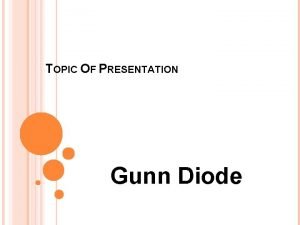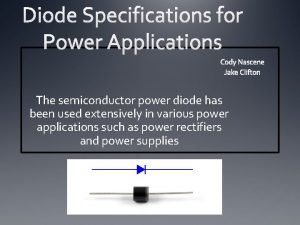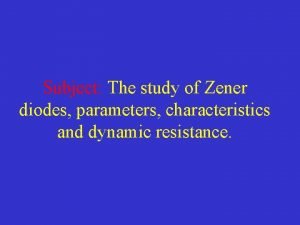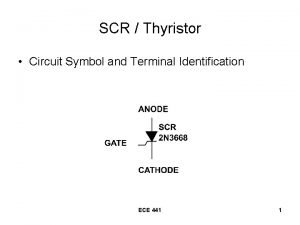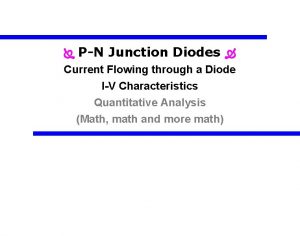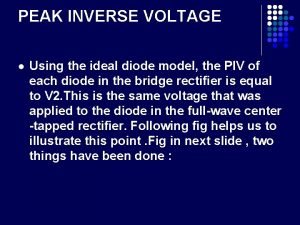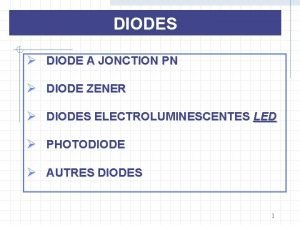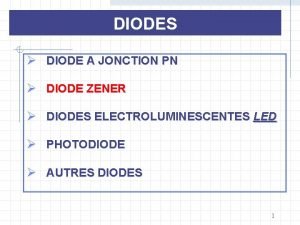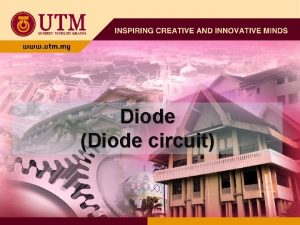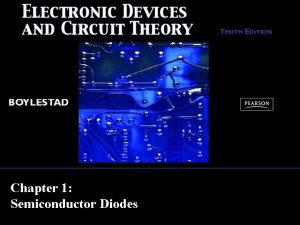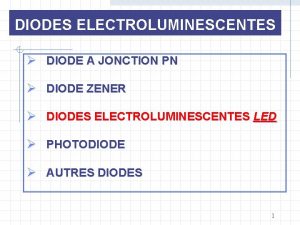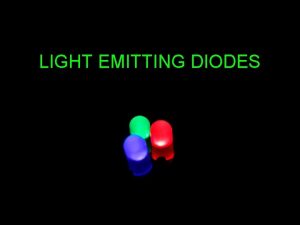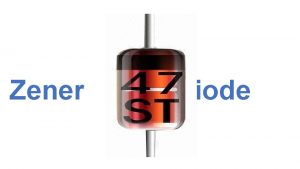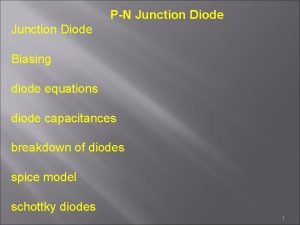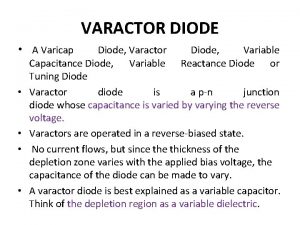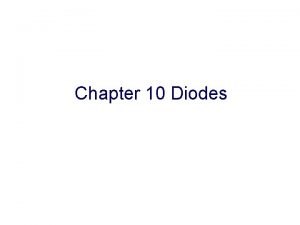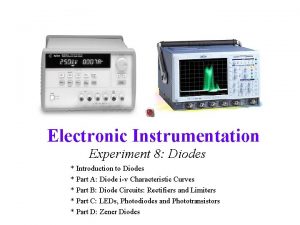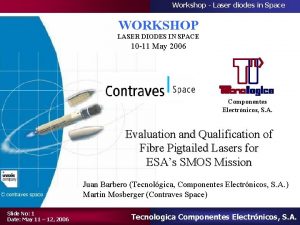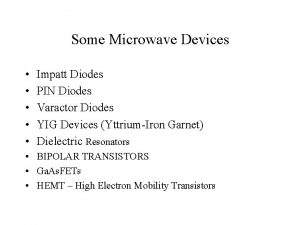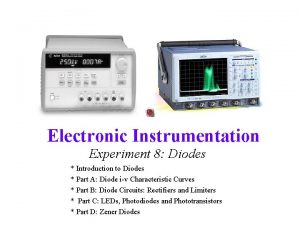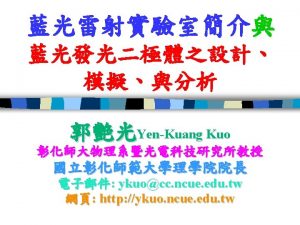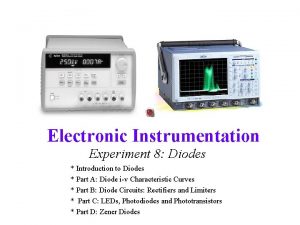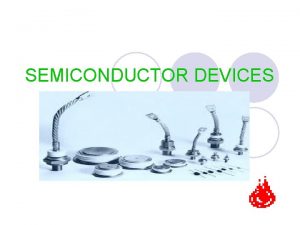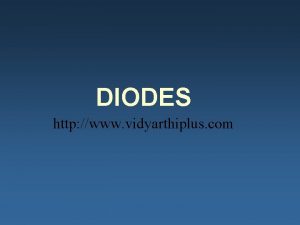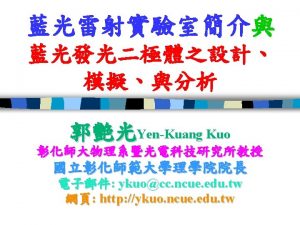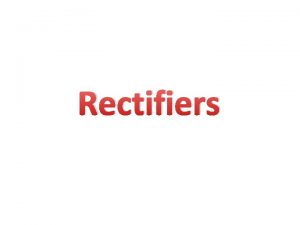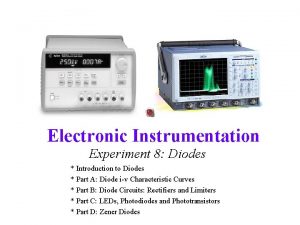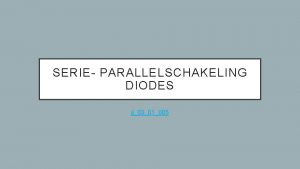Chapter 2 Diodes Diode n n Diode A





























- Slides: 29

Chapter 2 Diodes

Diode n n Diode - A two-electrode (two-terminal) device that acts as a one-way conductor. pn-junction diode – A pn junction with a lead connected to each of its semiconductor materials.

Forward Biased pn-Junction Diodes n n The component is biased so that the cathode is more negative than the anode. The voltage across the diode exceeds its barrier potential. The diode conducts fully when VF is approximately 0. 7 V (for silicon) or 0. 3 V (for germanium). The value of IF depends on the circuit voltage and resistance values.

Reverse Biased pn-Junction Diodes n n n The component is biased so that the cathode is more positive than the anode. The voltage across the diode is approximately equal to the applied voltage (V ). The diode current is approximately 0 A (as indicated by the ammeter).

Diode Models n n Model – A representation of a component or circuit that demonstrates one (or more) of its characteristics. There are three diode models: n The ideal model n The practical model n The complete model

Ideal Diode Model n n This model represents the diode as a simple switch that is either open (not conducting) or closed (conducting). Used in the initial analysis and troubleshooting of a diode circuit.

Practical Diode Model n This model includes the diode characteristics that are considered when: n Performing a mathematical analysis of a diode circuit. n Determining whether a given diode can be used in a given circuit or application.

Complete Diode Model n n This model is the most accurate of the diode models. The complete diode model includes several diode characteristics that are generally considered as a part of: n n n Circuit development (engineering) Special-case circuit analysis Explaining the differences between predicted and measured circuit values.

Ideal Diode Characteristics n When reverse biased (open switch), the diode: n n Has infinite resistance. Blocks current. Drops the applied voltage across its terminals. When forward biased (closed switch), the diode: n n n Has no resistance. Does not limit current. Has no voltage drop across its terminals.

Forward Voltage (VF) n n Knee Voltage (VK ) – The voltage at which device current suddenly increases or decreases. The practical diode model assumes that IF = 0 A until VF = VK. Once the diode begins to conduct, VF 0. 7 V regardless of the value of IF.

VF and Circuit Analysis

Percentage of Error n Indicates the difference between a calculated value and its corresponding measured value.

Peak Reverse Voltage (VRRM ) n n n VRRM is the maximum reverse voltage that won’t force a pn junction to conduct. When VR > VRRM , diode reverse current (IR) increases rapidly as the depletion layer breaks down. VRRM is a diode parameter that can be found on the component spec sheet.

n n n Forward Current and Power Average Forward Current (I ) – The maximum 0 allowable value of dc forward current for a diode. Forward Power Dissipation ( PD(max) ) – The maximum possible power dissipation of the forward-biased diode. I 0 and PD(max) are diode parameters that are listed on the component spec sheet.

Component Substitution n A substitute diode can be used in a circuit if: n n n Its VRRM rating is at least 20% greater than the maximum reverse voltage produced by the circuit. Its I 0 rating is at least 20% greater than the average (dc) value of IF generated by the circuit. Its PD(max) rating is at least 20% greater than the value of PF required by the circuit.

Complete-Model Diode Curve

Bulk Resistance ( RB ) n n RB causes VF to increase when IF increases. DVF in the complete diode curve is produced by IFRB.

Diode Reverse Current (IR ) The low-level current through a reverse biased pn junction, made up of: n n Reverse saturation current (IS) – A current caused by thermal activity in a reverse biased diode. Surface leakage current (ISL) – A current along the surface of a reverse-biased diode.

Temperature Effects on IF and VF n When temperature increases: n IF increases (at a specified value of V F) n VF decreases (at a specified value of I F)

Temperature Effects on IR increases with increases in temperature.

Zener Diode n n Zener diode – A diode designed to operate in the reverse breakdown region of its operating curve. A large change in zener current (DIZ) produces a relatively small change in zener voltage (DVZ).

Zener Current

Zener Current Ratings

Zener Impedance (ZZ ) n The zener diode’s opposition to any change in current.

Zener Equivalent Circuits

Light-Emitting Diode (LED) n LED – A diode that emits light when properly biased.

Series Current-limiting Resistor (RS )

Diode Resistance Test

Meter Diode Test Function
 Schottky diode vs zener diode
Schottky diode vs zener diode Barrier potential of germanium
Barrier potential of germanium Pn junction diode and zener diode difference
Pn junction diode and zener diode difference Diode i-v characteristics
Diode i-v characteristics Diodes
Diodes State any two special purpose diodes
State any two special purpose diodes What are diodes made of
What are diodes made of Zener diode exhibits
Zener diode exhibits Zener diode equivalent circuit models
Zener diode equivalent circuit models Special purpose diodes
Special purpose diodes Solid state rectifier circuit diagram
Solid state rectifier circuit diagram Rectifier advantages and disadvantages
Rectifier advantages and disadvantages Zener diodes applications
Zener diodes applications Power diodes types
Power diodes types Practical diode model
Practical diode model Simboli dioda
Simboli dioda Introduction to diodes
Introduction to diodes Circuit analysis with diodes
Circuit analysis with diodes Special purpose diodes
Special purpose diodes Chapter 2: diode applications solutions
Chapter 2: diode applications solutions Transistor series voltage regulator design
Transistor series voltage regulator design Varactor diode working principle
Varactor diode working principle Energy band diagram of diode
Energy band diagram of diode Gunn diode ppt
Gunn diode ppt Power diode is
Power diode is Zener diode parameters
Zener diode parameters Scr gate terminal
Scr gate terminal Current flow
Current flow Khan academy
Khan academy Importance of peak inverse voltage
Importance of peak inverse voltage
